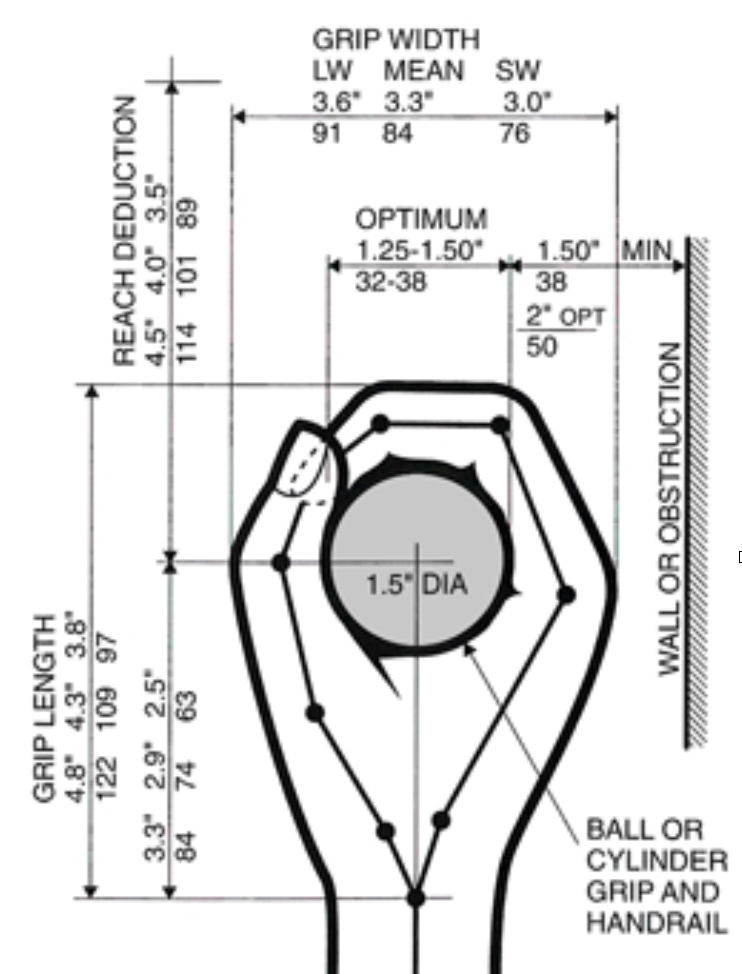OSHA’s Standards: recommendations for power tools:
Posture: Pain
When using tools employees may assume awkward postures including bending, stooping, or extended reaching. Awkward postures maintained for long periods of time may cause fatigue, discomfort and pain, especially when heavy tools are used.
Trigger: Overuse
Repeatedly using a single finger to activate triggers on power tools may cause overuse of tendons and muscles leading to irritation, swelling, pain and eventually immobility
Handle: Added Force
Improper orientation of tool handles may cause awkward position of the hand, wrist, or arm and increase force requirements of the task.
Grip Standards
For power grip, handle should be between 1.25-2” in diameter
Length> 4 inches - Add 0.4” of length if accommodating users wearing gloves
Tools with bent handles are better than those with straight handles when the force is applied horizontally (in the same direction as your straight forearm and wrist)
For tasks requiring high force, select a tool with a handle longer than the widest part of your hand
Further research
Tool design should facilitate the effective use of a power grip.
Thumb switch controls can cause overextension of the thumb.
Finger-strip controls share the load between the fingers, and allow the thumb to be used in a power grip for tool stability.
Workers should avoid bent wrist postures where possible.
Adjustable grips allow a worker to maintain good wrist posture.
-ALAN HEDGE: Hand Tool Guideline

